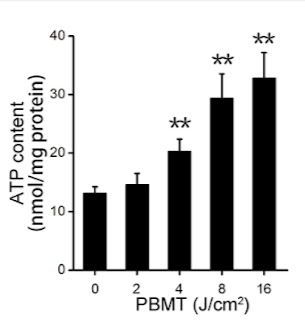Nitric oxide, tissue oxygenation and photobiomodulation, how are they related?
It is interesting how diverse the view of nitric oxide (NO) can be. In the first post, I took information from a researcher who saw only positives. Not even a hint of a balanced view, the voice of a salesman of NO-generating supplements. This view is given by focusing on only one function of NO, namely vasodilation. Although this is an important function, it is not the only one that NO performs. An excess of NO is quite destructive, it permanently modifies enzymes and damages the function of, for example, the nervous system, as I have already commented on.
In this post, I take information from one article that deals with the investigation of photobiomodulation. It is a relatively new field, where the tissue is irradiated either with LED radiation or a laser, or perhaps just with a broad spectrum of the sun or a light bulb. There is a lot of ambiguity here and the mechanisms of how it all happens are not known in detail at all. The positive effects are known, but the reproducibility of the results is problematic precisely because it is not known why it all works.
We will show what photobiomodulation (PBMT) can do, for example, from this study on two mouse models of diabetes (db/db) and obesity with a high-fat diet (HFD). Irradiation for two hours a day can correct blood sugar and restore the level of ATP, i.e. chemical energy for cells, within ten weeks. All you have to do is irradiate the mice with red laser light, in this case with a wavelength of 635 nm. And the effect is directly proportional to the total energy delivered by the laser.
The mechanism of photobiomodulation has not yet been elucidated. The above study shows that irradiation increases the formation of superoxide and hydrogen peroxide, i.e. free radicals (ROS), this is somehow mediated or causes an increase in the activity of cytochrome c oxidase (CcO), i.e. the fourth mitochondrial complex of the electron transport chain for obtaining ATP energy from our food. But if the photobiomodulation therapy is supplemented with antioxidants, here they used N-acetyl cysteine (NAC), all the effect is nullified. No improvement. Suppression of the activity of the fourth complex (CcO) also leads to the obliteration of the effects of the therapy.
 |
| The fourth mitochondrial complex (CcO) is responsible for the effects of photobiomodulation (PBMT). |
How does this relate to nitric oxide? First, we look at how NO affects combustion, that is, oxidative phosphorylation, through modulating the function of the fourth mitochondrial complex (cytochrome c oxidase CcO) of the electron transport chain (ETC). A number of scientists are trying to create mathematical models that would make it possible to understand the events taking place here as accurately as possible. They are very complex and dependent on conditions. It is quite clear that NO competes with oxygen here and inhibits the basic function of oxidation. This slowing of activity is greatest with mild oxygen deprivation. If there is a lot of oxygen, no slowing down of oxidation takes place. I can't help but think hypoxia is the central issue here. How does it arise? Lack of NAD+, stopped TCA cycle, insufficient production of CO2, lack of glutathione, fat burning with a non-functional antioxidant chain.
Another function of NO is probably binding to hemoglobin or myoglobin, NO is exchanged for released oxygen and can therefore provide more oxygen to the given tissue. On the one hand, more NO causes oxygen saving and improves the distribution of oxygen throughout the tissue, but at the same time, as a means of exchange for oxygen, it can functionally replace the missing CO2 and ensure more oxygen for the tissue.
Therefore, the most logical explanation seems to me that when there is a lack of oxygen, the cells distribute the oxygen equally among themselves. Oxygen is not consumed in the first row of cells, but can diffuse further. In addition, some NO will be produced from the available nitrite. Excellent protection of tissues in case of lack of oxygen. If we provide stimulation with red light in the absence of oxygen, the formation of NO from nitrites by CcO will increase. This not only saves oxygen, but also ensures the transfer of more oxygen to the tissue from hemoglobin or myoglobin. To produce NO, it is enough to irradiate the tissue with red light, it works best at 590 nm.
Light stimulation, or laser photobiomodulation, sometimes called low level laser therapy (LLLT), is simply interesting, it can completely reverse the modulation of the activity of the fourth complex (CcO) by nitric oxide and therefore return combustion to the initial values, remove insulin resistance and generally improve metabolism. It almost seems that the limitation of CcO activity by nitric oxide is also a mechanism of insulin resistance. And finally, even an ordinary red laser pointer (650 nm) can be used for a home LLLT.
References:
Kinetic model of the inhibition of respiration by endogenous nitric oxide in intact cells






Comments
Post a Comment